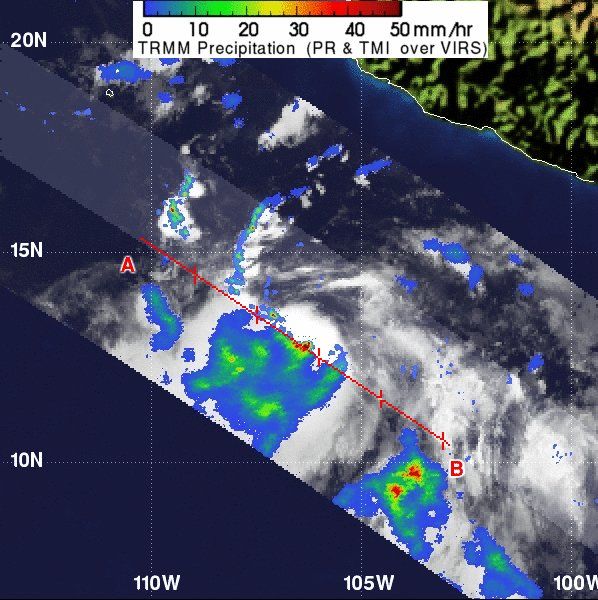
Tropical Storm Fabio Becomes Pacific's Sixth Storm of 2012

Tropical Storm Daniel is dying out, but Tropical Storm Fabio has formed in the East Pacific to take its place.
Fabio strengthened into a tropical storm earlier today (July 12). It has maximum sustained winds of 40 mph (65 kph) and is 665 miles (1,070 kilometers) south-southeast of the southern tip of Baja California.
The storm is expected to strengthen over the next day and could become a hurricane by Saturday, though it is also expected to stay well offshore and not pose a threat to land.
Further out to sea, Hurricane Emilia is still churning across the Pacific waters. After reaching a peak Category 4 hurricane status on July 10, Emilia's strength has wavered. Yesterday it was a Category 2 storm, though today is strengthened again slightly into a Category 3 storm with winds of 115 mph (185 kph); however, it is expected to weaken back into a Category 2 storm as moves over cooler waters later today. Emilia is continuing its westward march across the ocean basin and doesn't pose a threat to land.
What was once Hurricane Daniel is now merely a remnant low far out in the Central Pacific, several hundred miles to the south and east of Hawaii.
While the East Pacific basin has been extremely active in recent days, the Atlantic basin has been completely quiet. So far, five named storms (tropical storms and hurricanes) have formed in the Pacific and four in the Atlantic. The Pacific has seen four hurricanes and the Atlantic only one.
The 2012 Atlantic hurricane season is forecasted to be a normal one, with 15 named storms (tropical storms and hurricanes), with between or to eight hurricanes. The busiest months of the season are typically August and September.
Sign up for the Live Science daily newsletter now
Get the world’s most fascinating discoveries delivered straight to your inbox.

Andrea Thompson is an associate editor at Scientific American, where she covers sustainability, energy and the environment. Prior to that, she was a senior writer covering climate science at Climate Central and a reporter and editor at Live Science, where she primarily covered Earth science and the environment. She holds a graduate degree in science health and environmental reporting from New York University, as well as a bachelor of science and and masters of science in atmospheric chemistry from the Georgia Institute of Technology.











